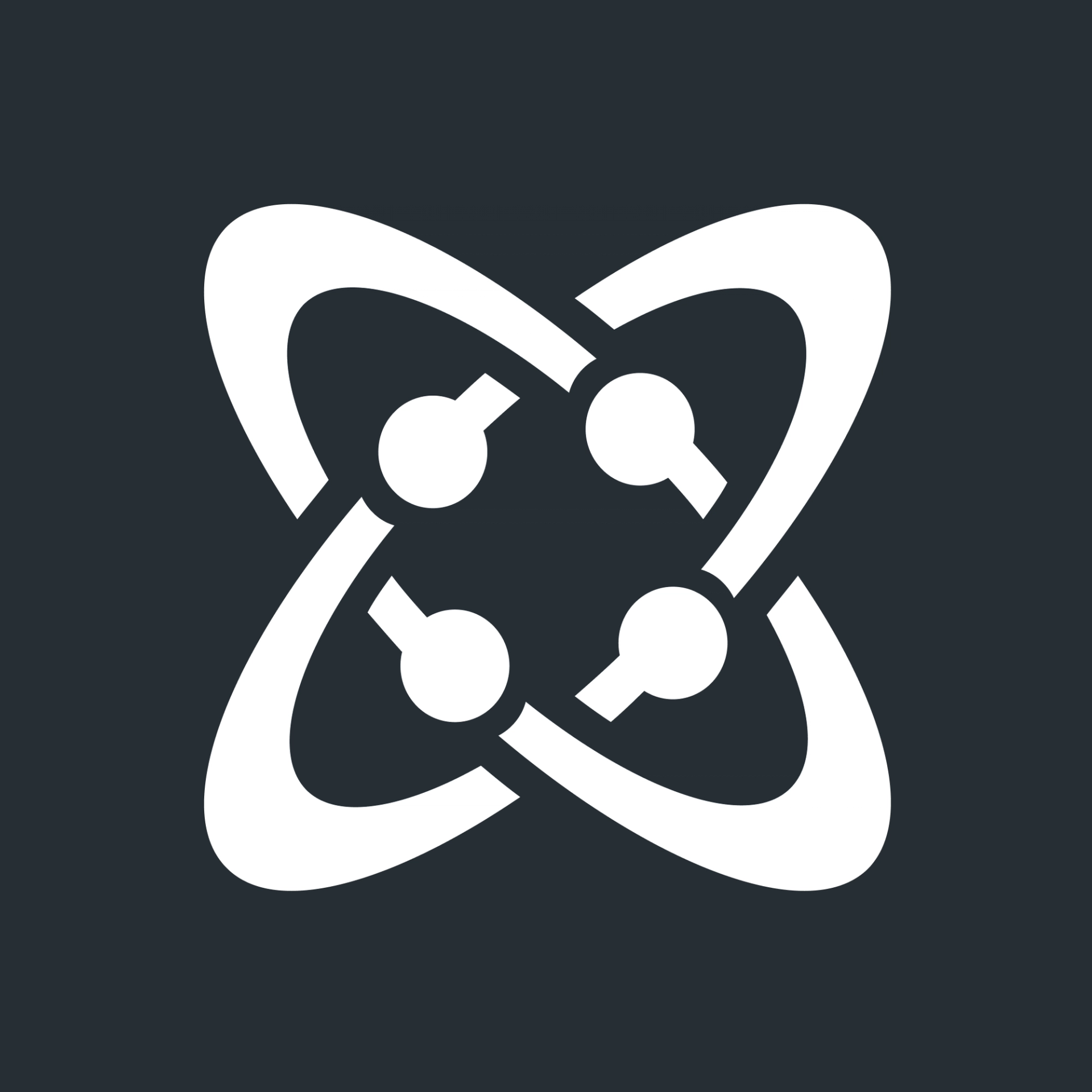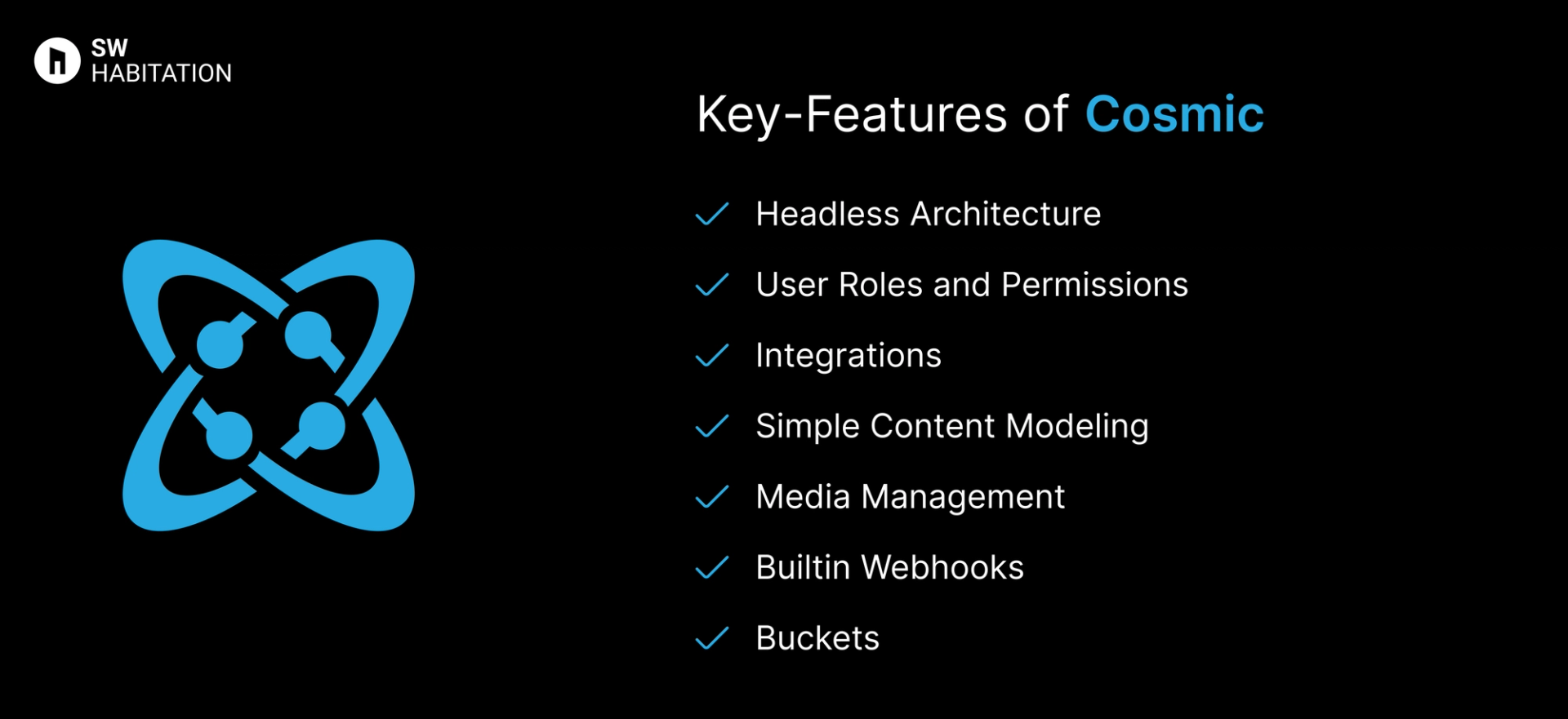Cosmic vs. Contentstack

Cosmic

Contentstack
You know, when you wanna make a website or a blog but don’t wanna mess with too much code? That’s where a CMS (Content Management System) comes in. It’s like a super easy tool that helps you add text, pictures, and videos to your site without needing to be a tech genius. You just log in, click a few buttons, and your content is live. It's quite simple, right?
What is Cosmic?
Cosmic is a headless CMS that allows you to manage content in the cloud and deliver it anywhere using APIs.
Just think of it as a content hub that lets you focus on creating and organising your content while it handles the heavy lifting of content delivery.
It’s popular among developers for its simplicity and flexibility. Whether you’re building a website, mobile app, or even a voice assistant, Cosmic makes it easy to pull content into any project.
Key Features of Cosmic


- Headless Architecture: It deliver content anywhere with its API-first approach.
- User Roles and Permissions: Manage access control for different team members.
- Integrations: Works well with frameworks like Next.js, React, and Vue.
- Simple Content Modeling: Create custom content structures without hassle.
- Media Management: Upload and manage media files effortlessly.
- Builtin Webhooks: Automate workflows by triggering events when content changes.
- Buckets: Organize content into “buckets” to keep everything neat and tidy.
Advantages of Cosmic
- Flexible: It works with any tech stack.
- Easy Setup: Get up and running in minutes with minimal configuration.
- Great for Small Projects: It's perfect for blogs, portfolios, and marketing sites.
- Content Buckets: It organize content smartly for easier management.
- API-First Approach: Ideal if you love working with APIs.
Disadvantages of Cosmic
- Pricing Can Add Up: Costs increase as content needs grow.
- Limited Free Plan: The free tier has some restrictions.
- Not Ideal for Large Projects: Lacks the complexity needed for enterprise-level projects.
What is Contentstack?
Contentstack is a headless CMS built to help teams create, manage, and deliver content across multiple digital platforms.
Unlike traditional CMS platforms, Contentstack separates content management from presentation, allowing you to deliver content via APIs to websites, mobile apps, IoT devices, and more.
Its focus on enterprise-level content management. It’s built with scalability, collaboration, and performance in mind which makes it a top choice for large teams and large projects.
Key Features of Contentstack


- Powerful APIs: Integrate easily with front-end frameworks like React, Vue, and Next.js.
- Headless Architecture: Decouple content from presentation for maximum flexibility.
- Robust Security: Enterprise grade security features for peace of mind.
- Content Modeling: Design content structures that fit your project’s needs.
- Omnichannel Delivery: Publish content across websites, mobile apps, and beyond.
- Built-in Localization: Handle multi language content natively.
- Version Control and Workflows: Track content changes and manage workflows with ease.
Advantages of Contentstack
- Collaboration Friendly: Built-in workflow management makes team collaboration smooth.
- Highly Scalable: Handles large projects and complex content models effortlessly.
- Top-Notch Security: Enterprise-grade security features to protect your content.
- Omni-channel Support: Deliver content to web, mobile, IoT, and more from a single source.
- Powerful API: Integrates seamlessly with popular front-end frameworks.
Disadvantages of Contentstack
- Learning Curve: It can be a bit overwhelming for beginners.
- Pricing: Enterprise-level features come with an enterprise-level price tag.
- Overkill for Small Projects: Best suited for large scale projects.
Comparison Between Cosmic vs Contentstack
Use Cases of Cosmic
- Small Projects: Portfolios, blogs, and marketing sites.
- Projects with Simple Content Structures: No need for overly complex setups.
- Developers Who Love APIs: Pull content into any front-end framework easily.
- Startups: Quick setup with minimal infrastructure.
Use Cases of Contentstack
- Enterprise Projects: Large-scale applications and websites.
- Omni-channel Content Delivery: Publish content across multiple platforms seamlessly.
- Collaborative Teams: Built-in workflows make it easy to manage multiple contributors.
- Complex Content Models: When your content structure is more complex.
Other Resources
Conclusion
Headless CMS platforms make managing your website very simple and easy. Whether you’re running a blog, online store, or business, they handle the tough stuff so you can focus on your content.
With a user-friendly interface and the ability to work with any technology, you can create a site that really fits your needs.
These platforms are flexible, secure, and can grow with you. They offer features like custom content, easy editing, and integrations with other tools. Choose the one that fits your requirements and start building your dream website today 🚀
Frequently asked questions
What is Cosmic?
Cosmic is a headless CMS that helps you manage content through an easy-to-use dashboard while serving it via APIs.
Do I need to know coding to use cosmic?
Nup Not really. You can manage content without coding, but developers can use its APIs for custom setups.
Can I use Cosmic with React or Next.js?
Yup, Cosmic is super friendly with React, Next.js, and other frameworks.
Is Cosmic free?
There’s a free plan for small projects, but you’ll need a paid plan for bigger sites or more features.
Does cosmic support media files like images and videos?
Yes, You can upload and manage media files directly in the dashboard.
What is Contentstack?
It’s a headless CMS that lets you manage content separately from your website’s design. Great for big projects.
Is contentstack hard to learn?
Not at all. It’s user-friendly, but if you’re new to headless CMS, there might be a small learning curve.
Can I use contentstack with React or Next.js?
Absolutely, Contentstack works well with modern frameworks like React, Next.js, and more.
Is contentstack free?
It’s not free, but there’s a trial to help you see if it fits your needs before committing.
Does contentstack handle multi-language content?
Yes, it’s great for managing content in multiple languages!
